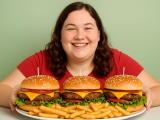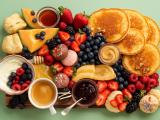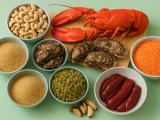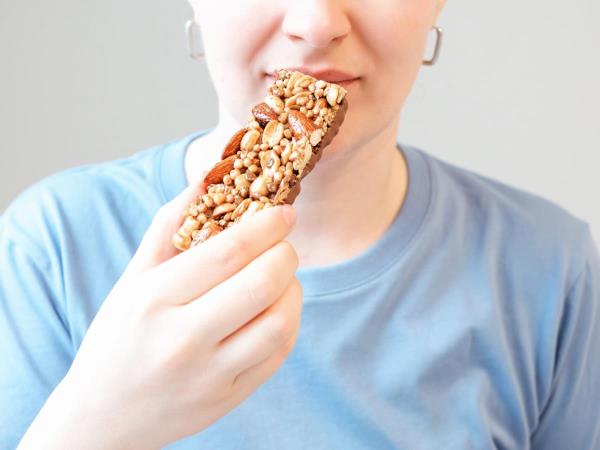A study from 2022 published by the Harvard School of Public Health showed that people who have enough protein in their diet lose muscle mass slower as they age and maintain a more stable body weight. On the other hand, diets that almost completely exclude carbohydrates have been shown to help with short-term weight loss, but in the long run, they can strain the kidneys and liver. Therefore, balance is key.
- Peanut Butter: More of a sweet treat than a protein source
Peanut butter is beloved by many. We spread it on bread, add it to smoothies, or even eat it by the spoonful. It's considered a protein food, but the numbers tell a different story. One tablespoon (about 15 grams) contains around 4 grams of protein and 95 calories. This means you would have to consume 10 tablespoons to get as much protein as in one serving of chicken (100 grams of chicken has 25 grams of protein and only 110 calories).
Of course, peanut butter contains healthy fats that are good for the heart, and fiber that benefits digestion. But if you consume it as your main source of protein, you may quickly exceed your calorie intake. A 2021 study showed that people who frequently eat peanut butter consume an average of 300 extra calories per day without even realizing it.
Instead of peanut butter, try homemade cottage cheese spread. Cottage cheese is affordable, high in protein (100 g has 12 g of protein and only 90 calories), and you can mix it with herbs or a drop of honey to get a healthy, nutritious, and tasty spread. - Nuts: Healthy, but not quite protein-rich
Walnuts, almonds, hazelnuts... we all know they are good for the brain, heart, and digestion. They do contain some protein (around 30 grams of protein per 100 grams), but they also come with around 620 calories. That's almost as much as a large pizza. A handful of nuts (28 g), the recommended daily amount, contains only about 7 grams of protein, which is considerably less than desired.
Nutritionists warn that nuts are not bad, but we should not overindulge in them. The good news is that our body does not fully digest all the calories from nuts. Approximately 15 to 25 percent of the calories remain trapped in fiber and are excreted from the body unutilized. This was discovered by researchers at the U.S. National Institutes of Health as early as 2020.
If you want more protein, try a combination of nuts with yogurt. Yogurt contains about 10 grams of protein per cup (150 g), and combined with nuts, you get the right balance: fiber, healthy fats, and substantial proteins. - Protein Bars: More sugar than nutrients
When we hear the term protein bar, we envision a healthy, energizing, protein-packed snack. But the numbers tell a different story. An average bar contains 4 to 10 grams of protein and 130 to 250 calories. Comparatively, for the same calorie intake, you could have two servings of low-fat cheese and get four times more protein.
Many bars also contain added sugar. In 2023, British researchers tested 80 different protein bars and found that 60% of them contained more sugar than recommended by the World Health Organization for a snack.
Instead of bars, prepare your homemade protein ball. Mix oatmeal, a little honey, and a few tablespoons of Greek yogurt. Greek yogurt has 17 g of protein per 100 g, which is almost three times more than regular yogurt. Such a ball will fill you up and provide the right energy. - Protein Bread and Pastries: Marketing at Play
When you see the words protein bread in a store, it's logical to expect more protein than in regular bread. But often, it's just a marketing trick. A regular slice of bread has around 9 grams of protein for 230 calories. The so-called protein bread often has only 8 grams of protein for 160 calories. The difference is minimal, but the price is significantly higher.
A study conducted in 2024 at the University of Munich showed that consumers are willing to pay up to 40% more for bread labeled as "protein-enriched," even though the difference in nutritional value is minimal.
It's much better to bake bread at home using whole grain flour and seeds. Seeds like pumpkin, sunflower, or flax contain proteins and healthy fats. One hundred grams of pumpkin seeds have as much as 30 grams of protein. Adding them to bread gives you much better nutritional value for less money.
- Chicken, turkey, eggs, fish: contain 20 - 25 g of protein per 100 g.
- Cottage cheese and yogurt: 10 - 17 g per 100 g.
- Lentils and beans: around 9 g of protein per 100 g, along with plenty of fiber that aids digestion.









 Would you like to be informed about news on the website?
Would you like to be informed about news on the website?

